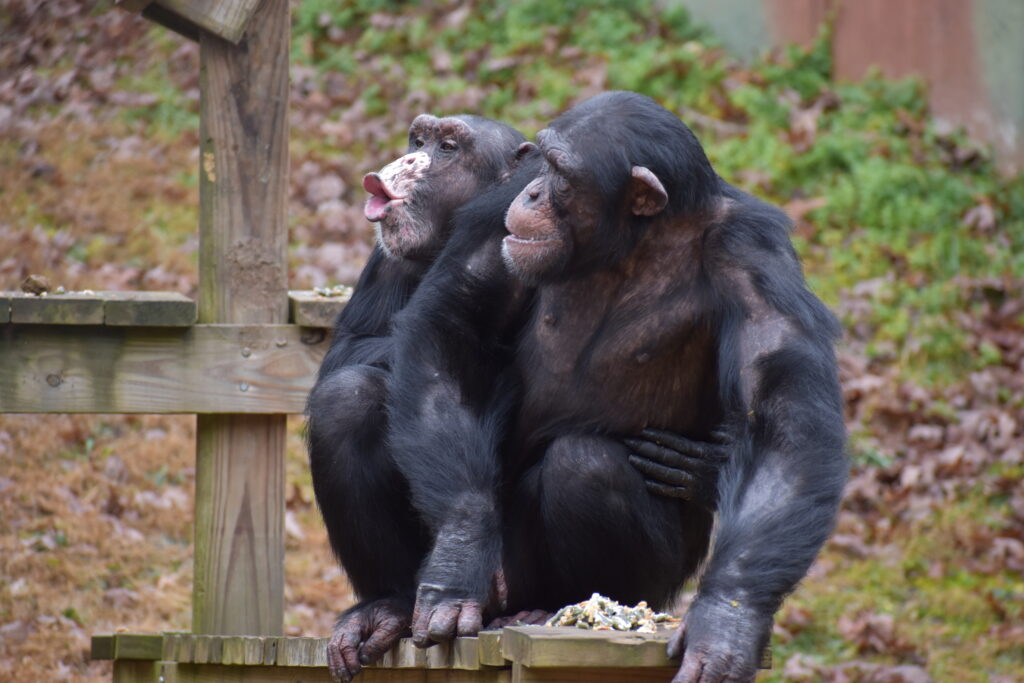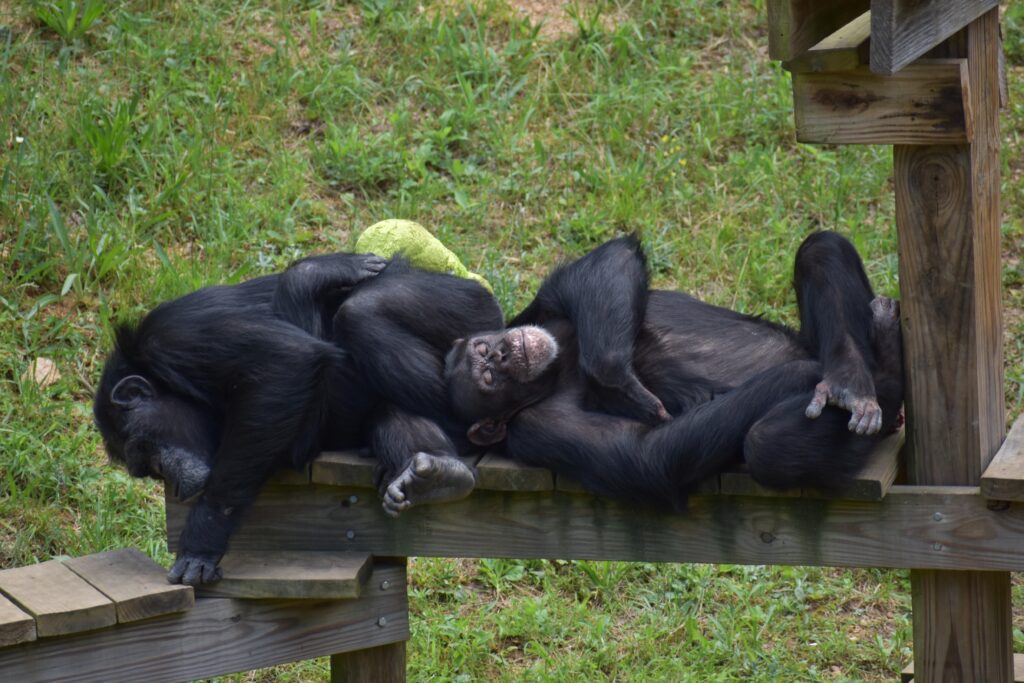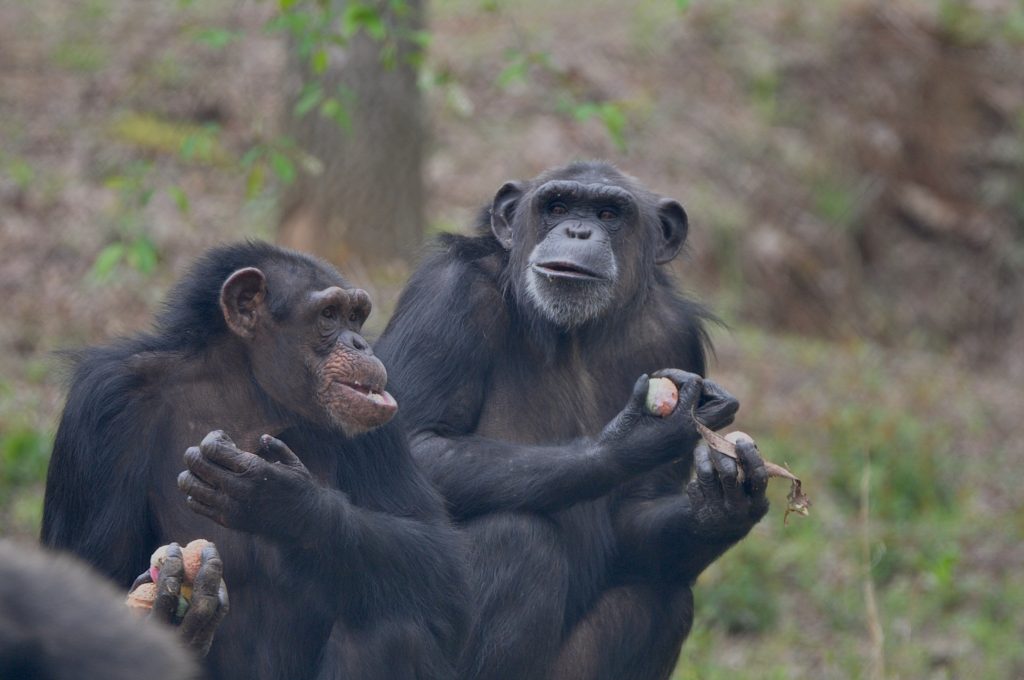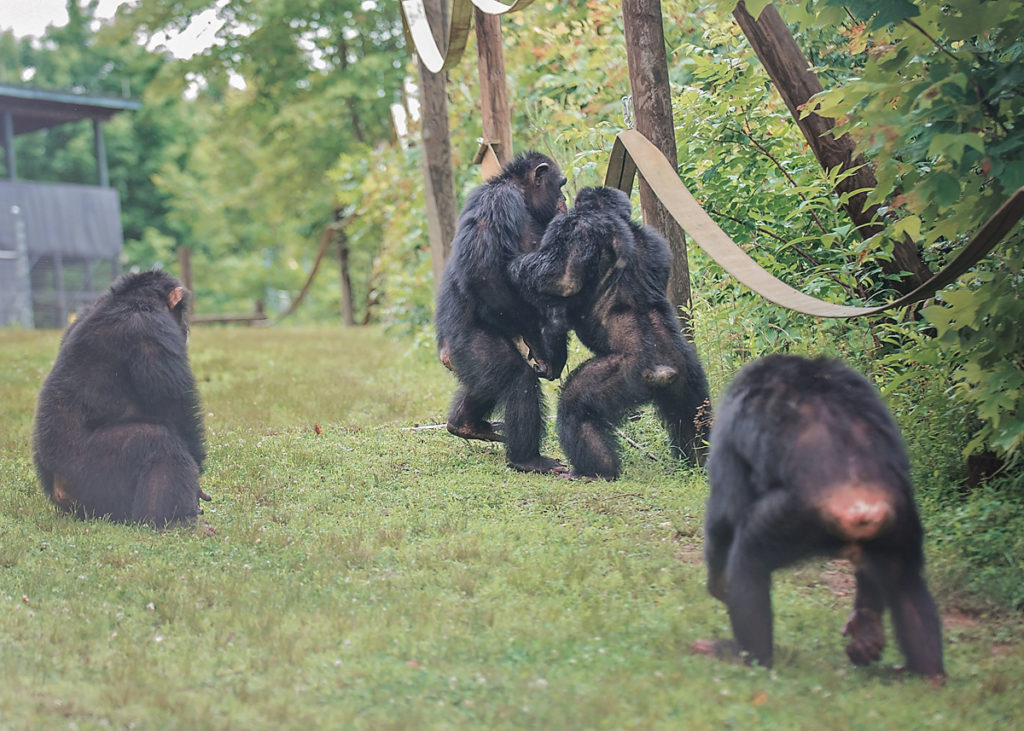
Chimps Helping Chimps – Chimps Healing Chimps

By Anna Lietman
Harriett Helping Betty
Recently, Betty sustained an ear injury. We think that one of the adolescent male chimps in her group may have gotten carried away with a display, and hurt her ear in the process.
We’re treating Betty by giving her both antibiotics and painkillers via her morning juice. That way we can ensure her ear won’t get infected and won’t cause her severe pain. Unfortunately, we can’t bandage or stitch the wound, as anything on or in a chimp’s body tends to bother them.
Fortunately, though, Betty can count on her caregivers, her medical team, and her fellow chimps to monitor the wound.

Betty’s best friend Harriett—who caregivers say doesn’t let Betty out of her sight—has been especially attentive. In fact, all her friends spend extra time grooming her and pay special attention to the wound. One caregiver noticed them even trying to help keep Betty’s ear clean. “They knew it was different and they knew it needed attention so they were focusing on that specifically [during their grooming sessions].”
In her ongoing recovery process, Betty can depend on her caregivers for key medications and her chimp friends for hands-on examination as well as emotional support. In this way, the chimps and humans in her life offer support in different but crucial ways as Betty heals.

Jennifer Helping Latricia
Similarly, chimp friends and human staff teamed up to support Latricia through a health scare.
Almost a year ago, Latricia developed an abscess on her backside that ruptured and bled. After losing blood, she grew weak and staff decided to intervene to give medical treatment. The healthcare team realized Latricia was unable to replenish her blood as quickly as she was losing it, and unable to replenish the lost blood with healthy, iron-rich blood.
Following their assessment, healthcare staff decided a blood transfusion would be the best course of action. They nominated Jenny as the perfect blood donor. Not only does Jenny willingly help her caregivers with tasks, but as Latricia’s closest companion she would make a wonderful “recovery pal,” staff figured.
Indeed, throughout the ordeal Jenny faithfully stuck by her best friend’s side. She played a key role in nursing Latricia back to health, supporting her physically then comforting her emotionally.
Chimps Helping Chimps Model
This collaborative model of care works especially well for chimps like Betty and Latricia, who both have strong bonds with other chimps in their group. Understandably, Betty and Latricia lean on their best friends when they’re sick or injured.
Chimps helping chimps also mimics the dynamics of chimpanzees in the wild. Chimps seek post-conflict reassurance and will end fights by consoling each other, usually with hand-holding, hugs, or their version of “kisses.”

Furthermore, Betty is what we call a “chimpy chimp”: a chimp who shows more interest in connecting with her chimp groupmates than with humans. This could be a result of her past; maybe she’s less trusting of humans after years of being experimented on. Regardless, chimps like Betty who have higher levels of trust with their peers can benefit most from the chimps helping chimps scenario.
Chimp Comfort Levels
Treating ex lab chimps—who have undergone countless procedures before retiring at sanctuary—is complicated. Staff at Project Chimps are highly sensitive to chimp residents who are averse to needles, mistrusting of humans, or have other hold-ups stemming from their traumatic past.
We know the chimps recover at a different pace. They have different levels of comfort: with humans, with unfamiliar spaces, with loud noises, etc. And especially when it comes to medical procedures, we understand that the chimps might be triggered.
Individualized Treatment
Therefore, when our medical team needs to intervene, we’ll adapt to make treatments as comfortable as possible for each individual chimp. Staff may offer food rewards as an incentive for undergoing treatment through the bars (known as positive reinforcement training). Or caregivers might sneak medication into the chimp’s morning juice, as with Betty.
But we try not to force the chimps into any uncomfortable situations. For instance, while many chimps are willing to hold out their arm to receive important vaccines, others choose not to participate, a decision that Project Chimps respects.
Different strategies may work better depending on a chimp’s likes and dislikes, their comfort levels, and even their friendships. When helping chimps through injury or illness, we consider these factors in order to design an optimal, comfortable treatment plan.

